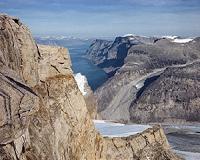 |
Tempe, Ariz. (UPI) Aug 23, 2010 The presence of oxygen in Earth's atmosphere came from ancient microbes inhabiting "oxygen oases" in the oceans billions of years ago, U.S. researchers say. Two and a half billion years ago the atmosphere contained almost no oxygen, Arizona State University scientists say, and life as we know it was not possible in an environment devoid of oxygen. Around that time, microbes known as cyanobacteria appeared that could capture sunlight to create energy through photosynthesis, and in the process altered Earth's atmosphere by the production of oxygen, a waste product to cyanobacteria but essential for later life, a university release said Monday. "Our research shows that oxygen accumulation on Earth first began to occur in surface ocean regions near the continents where the nutrient supply would have been the highest," Brian Kendall, a research associate at ASU's School of Earth and Space Exploration, said. "The evidence suggests that oxygen production in the oceans was vigorous in some locations at least 100 million years before it accumulated in the atmosphere." Although focused on Earth's atmosphere, its findings could have relevance for the search for life on other planets, a researcher said. "One of the ways we will look for life on planets orbiting other stars is to look for oxygen in their atmospheres," Professor Ariel Anbar, director of the Astrobiology Program at ASU, said. "So we want to know how the rise of oxygen relates to the emergence of photosynthesis."
Share This Article With Planet Earth
Related Links Explore The Early Earth at TerraDaily.com
 Arctic Rocks Offer New Glimpse Of Primitive Earth
Arctic Rocks Offer New Glimpse Of Primitive EarthWashington DC (SPX) Aug 19, 2010 Scientists have discovered a new window into the Earth's violent past. Geochemical evidence from volcanic rocks collected on Baffin Island in the Canadian Arctic suggests that beneath it lies a region of the Earth's mantle that has largely escaped the billions of years of melting and geological churning that has affected the rest of the planet. Researchers believe the discovery offers clue ... read more |
|
| The content herein, unless otherwise known to be public domain, are Copyright 1995-2010 - SpaceDaily. AFP and UPI Wire Stories are copyright Agence France-Presse and United Press International. ESA Portal Reports are copyright European Space Agency. All NASA sourced material is public domain. Additional copyrights may apply in whole or part to other bona fide parties. Advertising does not imply endorsement,agreement or approval of any opinions, statements or information provided by SpaceDaily on any Web page published or hosted by SpaceDaily. Privacy Statement |